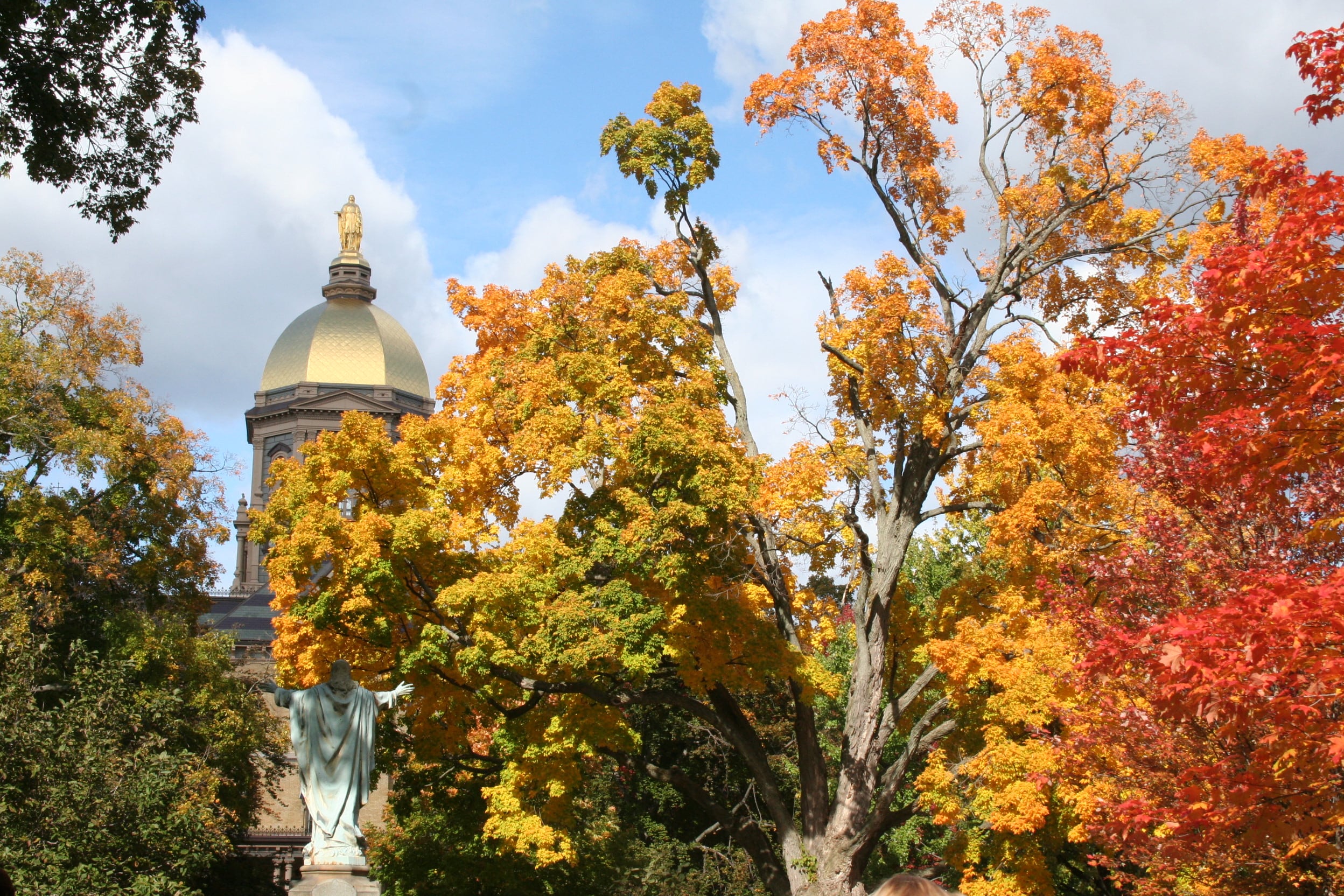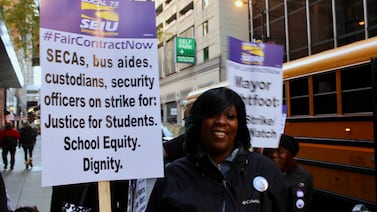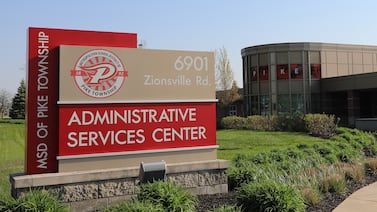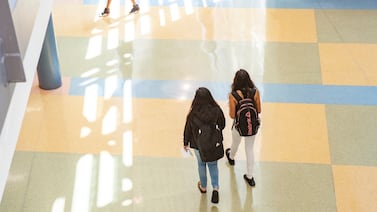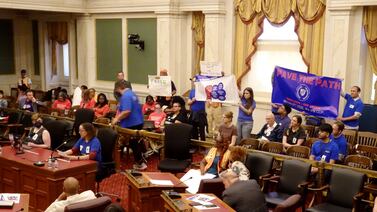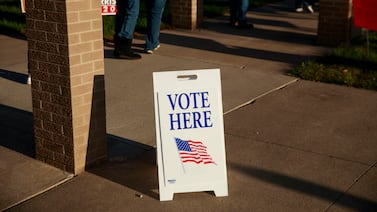Colleges and universities in Indiana and across the country can essentially no longer consider race in the admissions process, the U.S. Supreme Court ruled on Thursday.
The practice, known as race-conscious admissions, is used most often at the most selective colleges and universities in the country. It’s commonly known as affirmative action, but it is a distinct concept: Race-conscious admissions aims to increase diversity, while affirmative action was used to address historic inequities, something courts no longer allow in admissions.
The court ruled that race-conscious admissions programs at Harvard University and the University of North Carolina are unconstitutional and violate the equal protection clause of the U.S. Constitution, which bars discrimination.
However, Chief Justice John Roberts also wrote the court’s ruling does not mean that universities are prohibited from “considering an applicant’s discussion of how race affected his or her life, be it through discrimination, inspiration, or otherwise.”
In dissent, Justice Sonia Sotomayor described this as a meaningless concession — “nothing but an attempt to put lipstick on a pig.”
The ruling overturns roughly 40 years of precedent and removes what many colleges and advocates of the practice consider to be an important tool aimed at racial equity in higher education.
In Indiana, state leaders and others are already worried about the declining college-going rate, which is especially low for Black and Hispanic and Latino students. The Supreme Court’s decision could impact students’ college plans and whether they see themselves as college material at all. It could also directly affect several of the state’s largest, most influential institutions of higher education.
Here’s what to know about how the ruling impacts Indiana students:
Which colleges in Indiana consider race in admissions?
Chalkbeat examined common data sets for Indiana’s roughly 40 four-year colleges and universities to determine what factors they consider in admissions. If the data sets weren’t available, Chalkbeat reached out to the institutions directly.
About three dozen had data available or responded. A majority said they didn’t consider race in admissions. Additionally, Ivy Tech Community College, the state’s largest postsecondary institution, doesn’t consider race in admissions.
However, nine colleges and universities do, most notably the University of Notre Dame, as well as the main campuses for Indiana University and Purdue University. At those three schools, students of color make up a minority of enrollment, data shows. (The smaller regional campuses of IU and Purdue do not consider race in admissions.)
At Notre Dame, about 13% of undergraduates are Hispanic or Latino, about 4% are Black, and 6% are Asian. Students who are two or more races are also 6% of the undergraduates.
At Purdue, 7% of undergraduates are Hispanic or Latino, 2% are Black, 13% are Asian, and 5% are two or more races. And at IU, 8% of undergraduate students are Hispanic or Latino, 4% are Black, 9% are Asian, and 5% are two or more races.
The other schools that consider race are: Bethel University, Franklin College, Rose-Hulman Institute of Technology, Saint Mary’s College, Taylor University, and Wabash College.
What’s the racial breakdown of Indiana students in college?
The share of Indiana students who go to college began falling before the pandemic and is causing concern among state leaders.
The latest data available on the college-going rate showed that 53% of the high school class of 2020 went to college, per a report released last summer by the Indiana Commission for Higher Education.
In the Class of 2020, Asian students had a college going rate of 71% and white students had a rate of 56%. But Black students had just a 43% college-going rate. Hispanic and Latino students had a college going rate of 44%.
Boosting the college-going rate has been a priority for many state leaders, including Indiana Higher Education Commissioner Chris Lowery.
Ahead of the ruling, Lowery stressed that the commission will continue to call out “educational attainment gaps” for Indiana, and respond with initiatives including the 21st Century Scholars program, which provides full in-state tuition to students who qualify based on financial need, and more.
“We have a responsibility to not only highlight the challenges that persist but to also ensure all Hoosiers can access the opportunity education and training beyond high school can provide,” Lowery said in a statement to Chalkbeat Indiana.
What does ending race-conscious admissions mean for students?
The Supreme Court decision removes a way for students who are from underrepresented populations to reach campuses, said John Kuykendall, dean of the College of Education and Behavioral Sciences at the University of Indianapolis.
However, it also could have ripple effects on the way students look at colleges.
Joe Zachery, director of the College Prep Institute at the Center for Leadership Development, an Indianapolis-based organization that aims “to foster the advancement of minority youth in Central Indiana,” said that students could see this ruling and wonder if they’ll be admitted to a college, and if they are, whether they’d be accepted and welcomed on campus.
It is yet another reason that students might think college isn’t for them or that college isn’t affordable, Kuykendall added. He said their perception could be “they don’t want me there.”
Additionally, experts and others have worried about the impact on scholarships and programs that are based on race, as well as what students write about in their college essays.
Plus, it puts a spotlight on the inequities in K-12 education, Zachery said. He said if students go to K-12 schools that lack resources and funding, have fewer counselors, and have fewer Advanced Placement and International Baccalaureate classes, then they are already at a deficit when it comes to applying to college, especially the most selective institutions.
It doesn’t mean that they can’t do it, but they’ll have to work to overcome those deficits, he said.
What will colleges do now?
Following the Supreme Court’s decision, both IU and Purdue University stressed they will follow the law.
IU leaders told students, faculty and staff in a message that they will work to understand the ruling in the coming weeks, while also continuing “principles and values” that shape IU’s campus.
The university also said in a separate statement that it “reaffirms our commitment to fostering a learning environment that is enriched by students, faculty and staff with a broad range of backgrounds and by robust discourse that draws on various perspectives and beliefs.”
Similarly, Notre Dame President Rev. John Jenkins said in a statement that university leaders will study what the ruling means for admissions, while also stressing the university’s mission “to build a class reflecting the diversity of experiences and gifts of the human family” and its aim to “provide opportunities for a wide range of young people.”
Rose-Hulman also reiterated its commitment to access “for all students in STEM careers and education — especially those who have been historically underrepresented.”
In light of the Supreme Court’s decision, it will be even more important for schools to deliver on their promises of being welcoming and inclusive, Zachery said. He added that admissions is one thing, but student retention is another.
Students have to feel like they belong and have a community, or they will be in survival mode, instead of being actively engaged in campus and their education, he said.
This goes for all Indiana colleges and universities, not just the ones that are highly selective, experts agreed.
Kuykendall said students who don’t get into the more selective schools now might go more to the local and regional colleges, so those institutions need to be prepared for — and have appropriate resources for — those students.
“I see it becoming a bigger problem,” Zachery said.
One way that students can find that community is through first-year experience programs and offices, he said. These initiatives can set students up for success from activities to get them engaged and involved, find a community, as well as academic advising, mentoring and mental health, he said.
The reason students leave is that what was pitched to them wasn’t truthful, Zachery said. So in order to keep students and ensure they graduate, not only do schools have to say it, he added, they must “back it up and back it up in spades.”
Chalkbeat national education reporter Kalyn Belsha contributed to this article.
MJ Slaby oversees Chalkbeat Indiana’s coverage as bureau chief and covers higher education. Contact MJ at mslaby@chalkbeat.org. Chalkbeat Indiana partners with Open Campus on higher education coverage.


